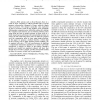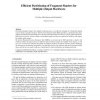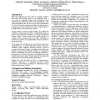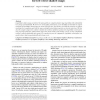53 search results - page 7 / 11 » Relational joins on graphics processors |
ISPDC
2010
IEEE
13 years 9 months ago
2010
IEEE
—With systems such as Road Runner, there is a trend in super computing to offload parallel tasks to special purpose co-processors, composed of many relatively simple scalar proc...
EGH
2004
Springer
14 years 2 months ago
2004
Springer
Partitioning fragment shaders into multiple rendering passes is an effective technique for virtualizing shading resource limits in graphics hardware. The Recursive Dominator Split...
HPDC
2010
IEEE
13 years 11 months ago
2010
IEEE
Massively multicore processors, like, for example, Graphics Processing Units (GPUs), provide, at a comparable price, a one order of magnitude higher peak performance than traditio...
GCB
2009
Springer
14 years 5 months ago
2009
Springer
: Solving problems in bioinformatics often needs extensive computational power. Current trends in processor architecture, especially massive multi-core processors for graphic cards...
EGH
2007
Springer
14 years 5 months ago
2007
Springer
Logarithmic shadow maps can deliver the same quality as competing shadow map algorithms with substantially less storage and bandwidth. We show how current GPU architectures can be...




